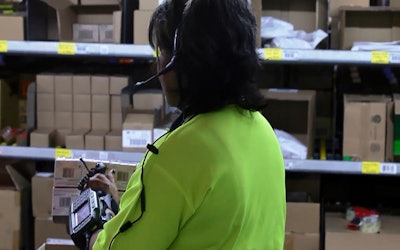
For warehouses, productivity is everything. Seconds of increased productivity per worker per day lead to minutes and even hours of potential savings over the course of a month, and days over the course of a year. As technology advances, many organizations are looking for ways to keep up, but can be stifled by the prospect of adjusting their systems and workflows, which require a large investment to create and implement.
The thought of introducing a new technology can be disconcerting. Voice-guided solutions in particular can seem intimidating at first glance. There are a number of reasons why they make sense, but the biggest reason we see organizations add voice solutions is the significant increase in productivity.
Let’s Talk Results
In the past, recognizing the return on investment (ROI) on voice applications was a long-term effort, if it was realized at all. That’s changing. Today, as we review implementations with customers, we hear clear, recognizable productivity benefits. In some cases, they had a couple of employees that were on the bottom in productivity before adding voice. Then, after just a few weeks of use, those employees catapult to become some of the most productive in the organization. The reason? Voice solutions dramatically simplify the process of capturing data for warehouse workers. Instead of frequently looking down at a device screen, reading through the information and then acting, voice solutions allow workers to process data on the move.
Voice should be part of a multi-modal data capture solution. It is a very rare use case that voice becomes the only way data is captured, but it absolutely should be included where it makes sense. There could be situations in which voice solutions or barcode scanning isn’t the best alternative, and key entry makes more sense. The key is to evaluate a workflow, then optimize it for the user to allow them to get through the process as quickly as possible.
Safety
What about safety? It may be tempting to associate warehouse voice solutions with normal mobile device speech-to-text systems. The New York Times even wrote that these consumer solutions cause a higher level of cognitive distraction while driving than any other activities on mobile devices. However, there are several key differences between using voice technology in a car and in a warehouse.
For example, when you are dictating messages on a consumer device, the message is typically longer and the solution is trying to transcribe it word for word, which requires the user to double-check the results against what they really wanted to say. When using voice in warehouses, interactions tend to be less complex spoken requests and commands, eliminating the need for workers to look down at the device screen to confirm the results while moving through a busy warehouse—reducing worker accidents.
The Future of Voice Solutions
Will we see an increase in adoption for voice solutions in markets outside of warehouses? In our experience, organizations that deploy voice solutions today typically see immediate ROI and are able to make the case for deploying them to other areas of their business where it makes sense, such as receiving, put-to-store and pallet/task-interleaving. While the idea of investing in a new voice solution can be intimidating, the benefits of increased productivity and success in the warehouse far outweigh the costs.




















